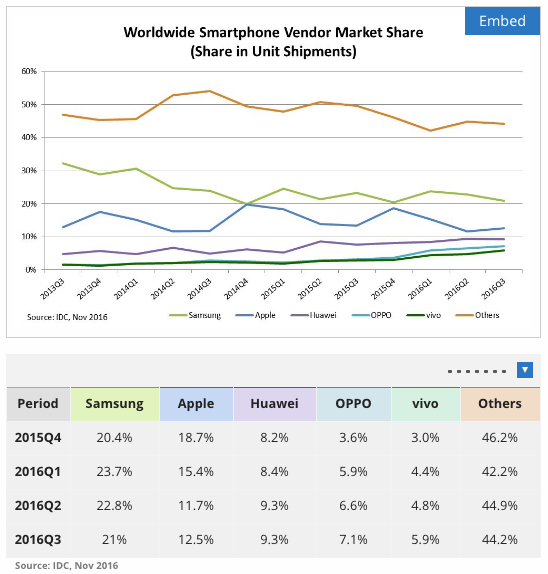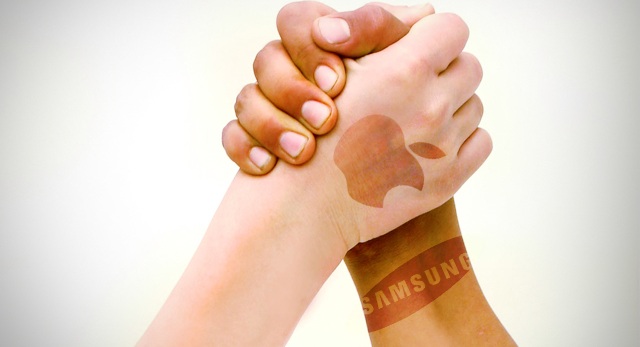Google’s Android mobile operating system has declined in terms of market share in the most lucrative market in the world yet again. According to data released by Kantar Worldpanel ComTech, the period ending November 2016 saw Android’s market share decline in key markets including Great Britain, France and Australia.
The good news for Android is that its market share in China grew 7.2% year-over-year in China to grab nearly 80%. Germany saw a healthy 6.5% increase as well. In the United States, however, it lost a significant 5.1% share, of which the lions share was lapped up by iOS.
Android’s market share in the United States has dropped to long-time low of 55.3%, marking the sixth consecutive period of declining market share in the country.

What’s significant from this data is that iOS made gains in nearly every market except China and Germany, but we must keep in mind that the time period for data collection was from September 1 to November 30, 2016, which means it started just before iPhone 7 was launched on September 7, 2016.
That could have given iOS an edge during the period because Google Pixel only came the following month, and by September the Note 7 debacle was already reaching fever pitch.
“In the EU5 countries, Android accounted for 72.4% of smartphone sales during this period, with iOS at 24.6%, a strong year-on-year uptick for both ecosystems as Windows’ share declined to 2.8%. For Android, this represented a 2.8 percentage point decline from the October period, while strong sales of iPhone 7 boosted iOS,” explained Dominic Sunnebo, Business Unit Director for Kantar Worldpanel ComTech Europe. “The holiday period is always strong for Apple, but it remains to be seen if demand for the latest devices will level out in the first quarter of 2017.”
On the devices front, in terms of global sales, Apple has historically been behind Samsung, as this data from IDC published in November 2016 shows:

However, as far as core markets go, iPhone has long held its own…until March 2016. After 11 consecutive months at the top, the apple of Apple’s “i” lost some serious ground to Samsung in Apple’s home market. As of March 2016, Samsung had captured 28.8% market share in the United States, with Apple having to be satisfied with a mere 23%. Samsung had finally reclaimed the throne.
And then came Note 7. And iPhone 7.
Obviously, you can imagine the kind of impact that the Note 7’s failure and Apple’s resulting success will have had on U.S. market shares for the two companies. As of November 2016, however, Apple seems to have regained the Number 1 position in the United States, capturing 31.3% market share against Samsung’s 28.9%.
It’s likely that Apple has regained pole position in the United States, but we’ll only know that once the numbers are released for the full fiscal 2016 for both companies. The current estimate is that Apple shipped 207 million iPhones in 2016, which is considerably lower than the 236 million phones they shipped the year before.
Apple will be releasing its fourth quarter results for 2016 (technically, Q1-2017) on January 31, 2017, so we should be able to make some extrapolations based on that.
Thanks for reading our work! Please bookmark 1redDrop.com to keep tabs on the hottest, most happening tech and business news from around the world.



